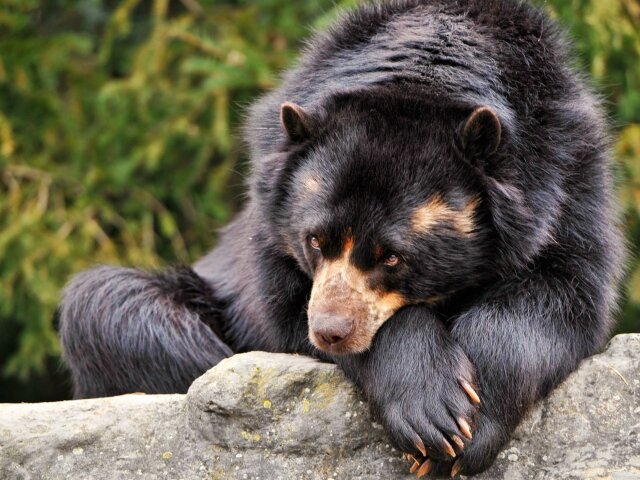Bear cubs shot dead in southwestern Iran

TEHRAN – Two bear cubs were found dead at a landfill site in Dena county, southwestern province of Kohgiluyeh and Boyer-Ahmad, the provincial department of environment (DOE) chief has announced.
“We dispatched rangers to the area as soon as the report was received,” Mehr news agency quoted Mohsen Bastaminejad as saying on Wednesday.
Lack of wildlife protection culture among people as well as awareness, and a lack of conservation forces are among the issues led to such tragic events, he lamented.
Both cubs were female aged 1 to 2, which have been shot by hunting weapons in their head and chest, Tasnim news agency reported.
Wounded bear cub lost life in Golestan
A bear cub also found severely wounded being shot in the northern province of Golestan, IRNA reported on Saturday.
The bear has been shot harshly and lost a leg; a bullet was found in its leg and another one elsewhere in its body, Mahmoud Shakiba, deputy chief of the provincial DOE has stated.
The DOE forces soon referred to the area and transferred the animal to the medical center, he said.
“The animal underwent different tests and we found out that it is not able to move again,” he further noted, regretting, the bear suffered for days and finally lost his life.
More recently, two men killed a bear cub in Savadkuh, northern province of Mazandaran, by throwing stones at it.
Threats to brown bear population in Iran
Conflict with human is the main reason behind the reduction in brown bear population in Iran.
Local people sometimes kill the bears for a false traditional belief which claims that bear meat has lots of medical uses.
However, food scarcity makes bears get attracted to areas where livestock live, and some rural residents use guns and poisonous lures to kill them in order to defend their crops and livestock.
Also, bear poaching is another reason behind the brown bears population shrinking; illegal hunters kill the animals for their skins.
Unfortunately, not many studies have been conducted on the bears in Iran, and therefore little is known on their ecology, current distribution, population size, and trend. This has resulted in a lack of state-run monitoring of the bears in the Iranian protected areas.
All these events can affect the decision-making process by the relevant wildlife authorities. Therefore, it is crucial to launch projects on the bears to count and determine their current population structure in Iran for prioritizing conservation going forward if their extinction is to be avoided. The Department of Environment is fully responsible for planning, funding, and conducting the projects.
FB/MG
Leave a Comment